This article was co-authored by wikiHow staff writer, Finn Kobler. Finn Kobler graduated from USC in 2022 with a BFA in Writing for Screen/Television. He is a two-time California State Champion and record holder in Original Prose/Poetry, a 2018 finalist for the Los Angeles Youth Poet Laureate, and he's written micro-budget films that have been screened in over 150 theaters nationwide. Growing up, Finn spent every summer helping his family's nonprofit arts program, Showdown Stage Company, empower people through accessible media. He hopes to continue that mission with his writing at wikiHow.
The wikiHow Video Team also followed the article's instructions and verified that they work.
This article has been viewed 281,035 times.
Learn more...
Flipping a coin is a great way to settle a simple dispute or make a quick decision between two closely matched choices. All it requires is a little bit of hand-eye coordination. If you want to perfect your coin flip, keep reading. We’ll give you the best advice on how to toss and a few tricks to increase your odds of winning. Happy flipping!
Things You Should Know
- Flip a coin by creating a fist and loosely lodging your thumb between your middle and index fingers. Place the coin on your hand and use the force of your thumb to flip it upward.
- Exert less force with your thumb to create a gentler coin toss. This allows you to keep track of the coin’s movements more easily and predict the result more accurately.
- Practice your coin flipping regularly to make your tosses more efficient and predictable.
Steps
Flipping the Coin
-
1Choose a coin to toss. Selecting a good coin for flipping is all about personal preference and hand size. If you have larger hands, opt for a larger coin like a quarter. If you have smaller hands, go for a penny or nickel. You can choose any coin as long as it has two distinct sides.
- Instead of choosing a random coin, some people carry “lucky” coins with them that they use specifically for coin tosses. You’re welcome to try this, but there is no proof a “lucky” coin will land more often in your favor.[1]
-
2Make a fist with your thumb facing up. Once you’ve chosen the right coin for you, ball your hand up, rolling your fingers towards your palm. Keep your thumb loose, since it will be the finger you use to push the coin into the air.
- While you want your thumb to have leverage, keep the rest of your fingers tightly wrapped against your palm. This will give you more power when you flick the coin with your thumb.
Advertisement -
3Place your thumb under your index finger. After you’ve balled your fingers into your hand, loosely lodge your thumb between your second finger and the top part of your middle finger.[2]
-
4Set the coin on top of your thumb. Rest the coin flat so it sits comfortably on the back of your thumb (which should still be lodged under your index finger). The coin should not fall off your hand, even if you're not holding it in place.[3]
-
5Quickly flick your thumb free to flip the coin. Use a swift, snapping motion to push the coin into the air so it flips side-over-side. You can also push your hand upwards as you do this.[4]
-
6Follow the coin with your eyes if you plan on catching it. Keep track of the motion of your coin, so you can catch it with your hand before it hits the floor.
- If you’re using a coin to make a decision between two tough choices, consider how you feel about each choice while your coin is in the air. This split-second may cause you to lean more towards one option. If you do, ignore the results of the coin flip and choose the option you feel more strongly about.[5]
Determining the Results
-
1Decide how you’ll end the coin toss before you flip. Clearly determine how you’ll end your coin toss beforehand. Will you catch your coin or let it hit the ground? If you catch it, will you reveal the coin as is, or flip it over one final time? Clearly communicate your choice before the coin is tossed.
- How the toss ends really doesn’t matter in terms of results. However, coming to an agreement beforehand makes both parties feel like the flip is fair.[6]
-
2Choose a tosser and heads or tails before the coin is flipped. Have someone call heads or tails to determine who is on each side of the coin flip. In addition, select someone to toss the coin. If possible, ask to be the tosser so you can determine the tossing conditions, which may give you a slight edge.
- To guarantee a truly random result, avoid flipping a real coin altogether. Science shows that coin tosses are not fully random and easily skewed by other factors.[7] Instead, use a random coin flipping website or app.
-
3Determine which side of the coin is facing up after it’s been tossed. Once you’ve determined your tossing conditions, both sides have selected a side, and the coin has been flipped, check to see which side the coin has landed on. Whoever’s side is facing up is the winner.[8]
Improving Your Odds
-
1Select the side that’s facing upwards before it’s tossed. Believe it or not, a coin toss is actually not a 50-50 proposition. The different designs on each face of the coin make it slightly more probable that the coin will land on the side facing upwards before it’s flipped. This may not seem like a big difference, but when you are trying to win a coin toss, every little bit helps. Assess which side of the coin is facing up beforehand and bet on that side.[9]
- Take into account how the toss will end as well. If the tosser (you or the other person) is going to catch the coin and flip it over onto another surface (their hand, a table), then pick the side facing down. The extra flip after the coin lands will account for the difference.
-
2Keep your tosses soft. A softer toss will cause the coin to flip fewer times, meaning you can track its movement more easily. Call the toss while it's in the air to try and improve your odds of winning.
-
3Practice your coin flips. Like any skill, flipping a coin is something you can improve with practice. The more you do it, the more consistent you can make your tosses, which can make you a better judge of how many times the coin will flip in the air.
- To create a more predictable coin flip, start by trying to get your coin to fall on the same side five times in a row. Then, increase to seven. Then nine, and eleven, and so on. Every time you miss, start over with five.
Community Q&A
-
QuestionI'm eleven. Is my hand too small to flip a quarter?
 wikiHow Staff EditorThis answer was written by one of our trained team of researchers who validated it for accuracy and comprehensiveness.
wikiHow Staff EditorThis answer was written by one of our trained team of researchers who validated it for accuracy and comprehensiveness.
Staff Answer wikiHow Staff EditorStaff AnswerThe right sized coin is all a matter of personal preference. If you feel like you can easily control the motion of a quarter, use a quarter.
wikiHow Staff EditorStaff AnswerThe right sized coin is all a matter of personal preference. If you feel like you can easily control the motion of a quarter, use a quarter. -
QuestionCan you use the same hand to catch and flip a coin?
 wikiHow Staff EditorThis answer was written by one of our trained team of researchers who validated it for accuracy and comprehensiveness.
wikiHow Staff EditorThis answer was written by one of our trained team of researchers who validated it for accuracy and comprehensiveness.
Staff Answer wikiHow Staff EditorStaff AnswerYes, you can use the same hand to flip and catch a coin. However, it's generally advised to flip with one hand and catch with the other.
wikiHow Staff EditorStaff AnswerYes, you can use the same hand to flip and catch a coin. However, it's generally advised to flip with one hand and catch with the other. -
QuestionCan you flip a coin in either hand?
 wikiHow Staff EditorThis answer was written by one of our trained team of researchers who validated it for accuracy and comprehensiveness.
wikiHow Staff EditorThis answer was written by one of our trained team of researchers who validated it for accuracy and comprehensiveness.
Staff Answer wikiHow Staff EditorStaff AnswerYes. Whether you use your left or right hand has no effect on the validity of a coin toss.
wikiHow Staff EditorStaff AnswerYes. Whether you use your left or right hand has no effect on the validity of a coin toss.
References
- ↑ https://longisland.news12.com/heads-or-tails-greenlawn-fan-used-coin-toss-to-accurately-predict-6-3-jets
- ↑ https://www.ncbi.nlm.nih.gov/pmc/articles/PMC2789164/
- ↑ https://www.ncbi.nlm.nih.gov/pmc/articles/PMC2789164/
- ↑ https://www.ncbi.nlm.nih.gov/pmc/articles/PMC2789164/
- ↑ https://www.ncbi.nlm.nih.gov/pmc/articles/PMC8253383/
- ↑ https://www.ncbi.nlm.nih.gov/pmc/articles/PMC2789164/
- ↑ https://www.businessinsider.com/why-coin-flips-arent-random-universe-splitter-app-2019-10
- ↑ https://www.ncbi.nlm.nih.gov/pmc/articles/PMC2789164/
- ↑ https://sites.psu.edu/siowfa15/2015/10/19/coin-flips-arent-5050/
About This Article
Before you flip a coin, decide what you want the outcome of the toss to mean. For instance, “heads means yes, tails means no.” When you’re ready to flip, make a fist with your thumb facing up. Tuck the tip of your thumb in so it’s just under your index finger. Balance the coin on the gap between your thumb and index finger, then quickly flick your thumb up to flip the coin into the air. Watch the coin so you can either catch it or see where it lands. Call the toss based on the decision you made before you flipped the coin. Keep reading for tips on guessing a coin flip!
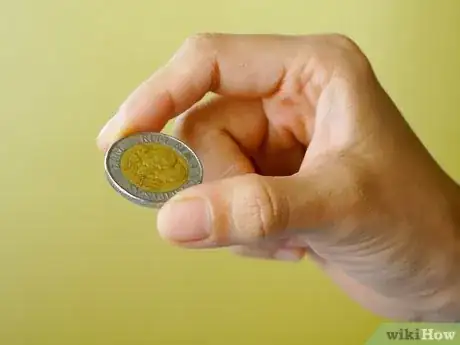
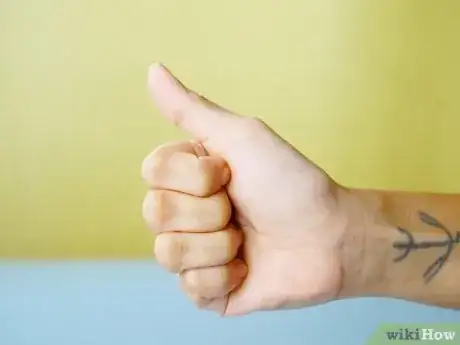

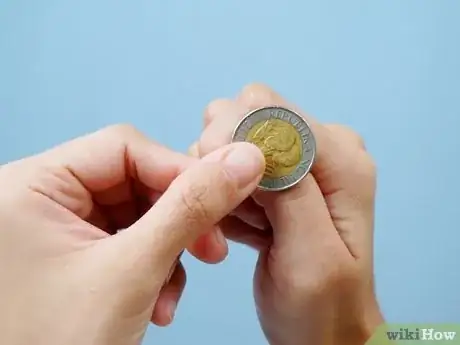
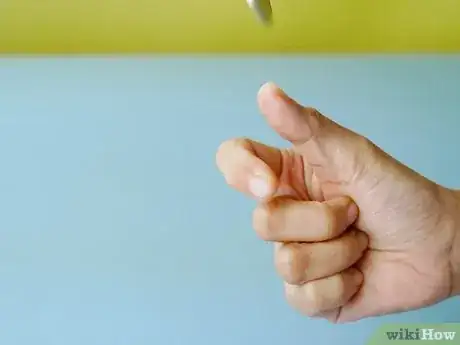
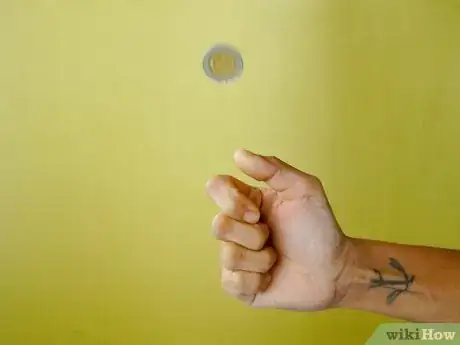
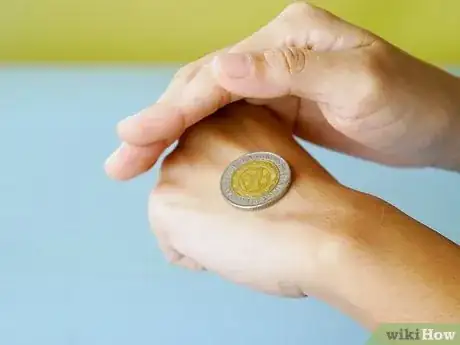
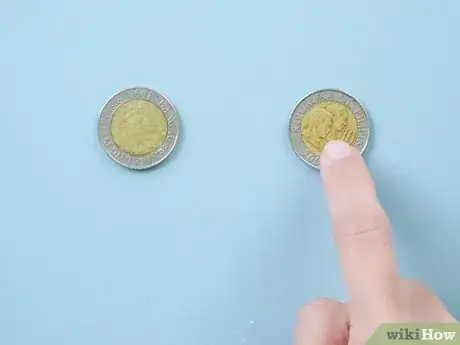
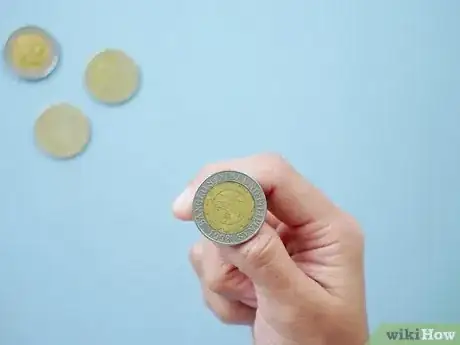
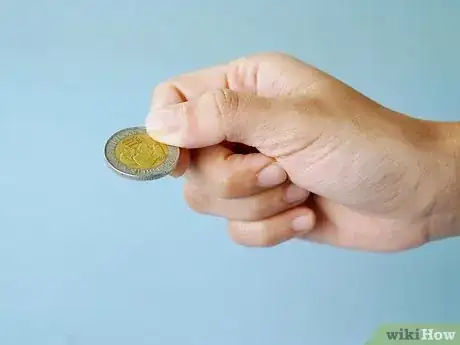
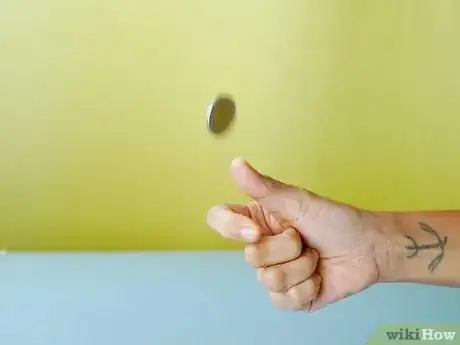
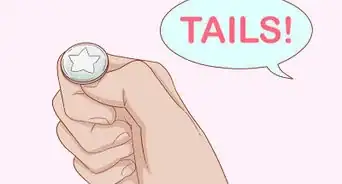
-Step-7-Version-4.webp)


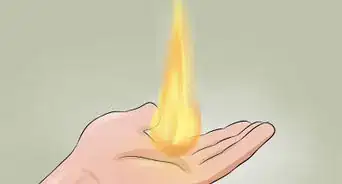



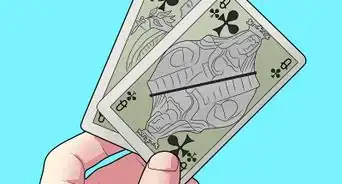









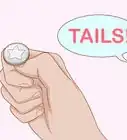

-Step-7-Version-4.webp)



































